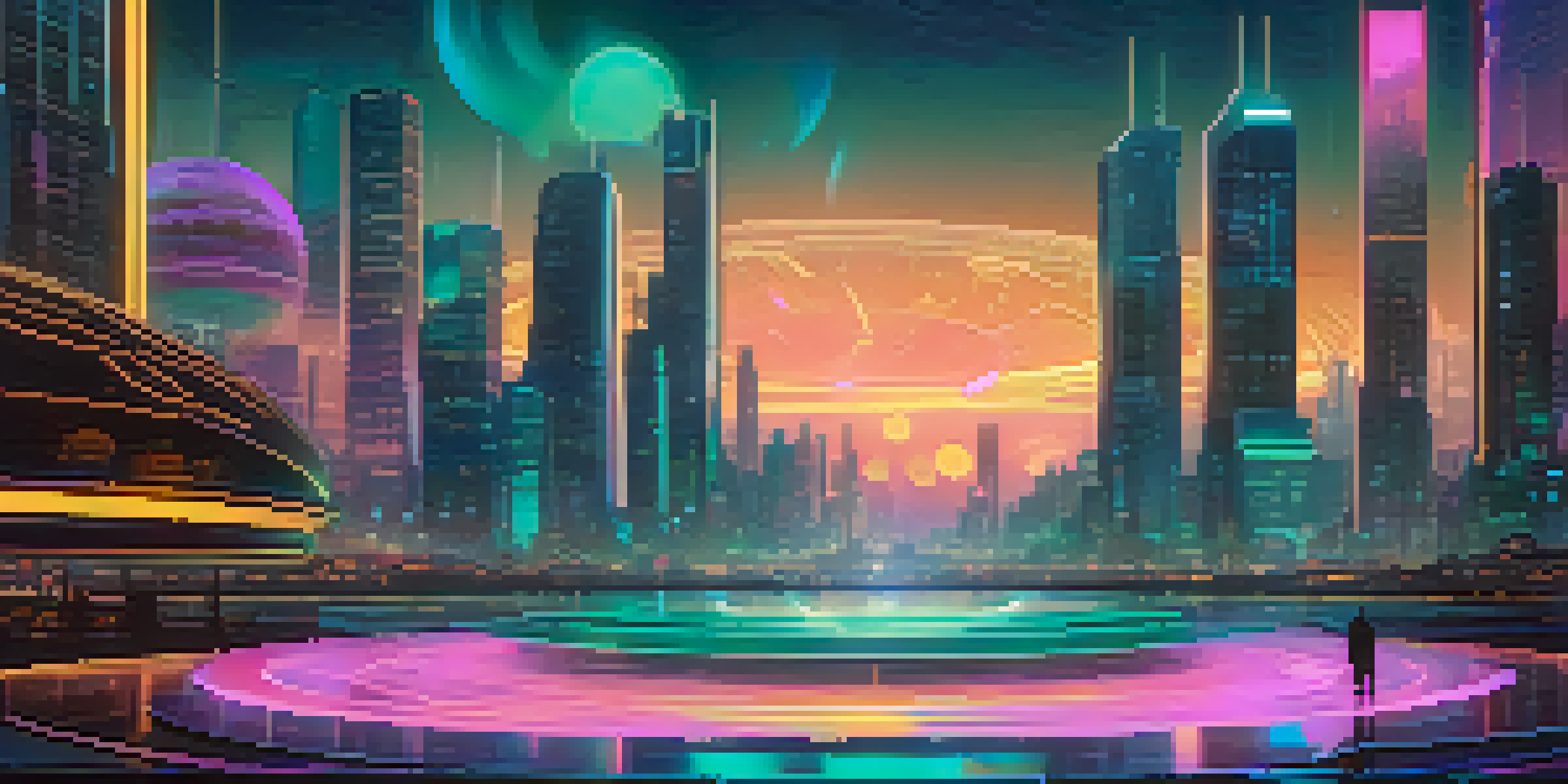NFTs and Intellectual Property: Protecting Digital Collectibles

Understanding NFTs: What They Are and How They Work
NFTs, or non-fungible tokens, are unique digital assets verified using blockchain technology. Unlike cryptocurrencies, which are interchangeable, NFTs represent ownership of a specific item, such as artwork or music. This uniqueness is what sets them apart and makes them valuable in the digital marketplace.
Intellectual property is the oil of the 21st century.
Think of NFTs like a digital certificate of authenticity. Just as a signed painting proves its creator and value, an NFT verifies ownership and provenance in the digital realm. This has opened up new opportunities for artists, musicians, and creators to monetize their work directly.
With the rise of NFTs, the need for clear understanding around intellectual property rights has become crucial. Creators must know how to protect their works while navigating the complexities of ownership in this new digital landscape.
The Importance of Intellectual Property in the NFT Space
Intellectual property (IP) refers to the legal rights that protect creations of the mind, like inventions, designs, and artistic works. In the context of NFTs, IP is vital as it ensures that creators retain control over how their work is used and distributed. Without proper IP protections, creators risk losing ownership and potential revenue from their digital assets.

For example, consider an artist who sells an NFT of their painting. While the buyer owns the NFT, they may not automatically gain the right to reproduce or sell copies of the artwork. Understanding these nuances is essential for both creators and collectors to navigate the digital collectible market effectively.
NFTs Require IP Rights Awareness
Understanding intellectual property rights is crucial for creators in the NFT space to protect their work and potential revenue.
IP laws can vary significantly between countries, adding another layer of complexity. Therefore, it's crucial for NFT creators and buyers to stay informed about the legal landscape surrounding intellectual property to protect their interests.
How to Protect Your Digital Collectibles with IP Rights
Protecting your digital collectibles starts with understanding your rights as a creator. Registering your work with the appropriate intellectual property offices can provide legal protection and help establish ownership. This is particularly important for artists, as it allows them to enforce their rights if someone uses their work without permission.
The future belongs to those who believe in the beauty of their dreams.
Additionally, including clear terms of use when selling NFTs can help outline the rights and restrictions associated with the digital asset. For instance, you might specify whether the buyer can reproduce the work or if they hold exclusive rights. This transparency is vital for fostering trust between creators and collectors.
Lastly, consider consulting with an intellectual property attorney. They can provide tailored advice and help you navigate the complexities of IP law, ensuring that your digital collectibles are protected from infringement.
The Role of Licensing in NFTs and IP Protection
Licensing is a critical tool for creators looking to protect their IP while still allowing others to use their work. By issuing licenses, creators can specify how their NFTs can be used, whether for commercial purposes or personal enjoyment. This not only helps safeguard the creator's rights but also opens avenues for revenue through licensing fees.
For example, an artist may sell an NFT of their artwork while retaining the right to license it for merchandise or advertising. This dual approach can maximize the artist's earnings while still granting collectors ownership of the digital piece.
Licensing Enhances Creator Control
Issuing licenses allows creators to specify usage rights for their NFTs, safeguarding their intellectual property while generating revenue.
Moreover, clear licensing agreements can prevent disputes down the line. When both parties understand their rights and responsibilities, it creates a smoother transaction and fosters a more collaborative environment in the NFT space.
Challenges Creators Face with NFTs and IP Rights
Despite the advantages, creators face significant challenges when navigating NFTs and intellectual property. One major concern is the potential for copyright infringement, where someone might create an NFT of a work they do not own. This not only threatens the original creator’s income but also complicates the legal landscape.
Another challenge is the lack of clarity in existing IP laws regarding digital assets. As technology evolves, many legal frameworks struggle to keep pace, leaving creators uncertain about their rights. This uncertainty can discourage artists from fully engaging in the NFT market.
Additionally, the global nature of NFTs means that creators must be aware of different laws in various jurisdictions. This can be daunting, but staying informed and seeking professional guidance can mitigate some of these challenges.
The Future of NFTs and Intellectual Property Protection
As the NFT market continues to grow, the intersection of NFTs and intellectual property will evolve. We can expect more robust legal frameworks to emerge, providing clearer guidelines for creators and collectors alike. This will likely lead to increased confidence in the market, encouraging more artists to explore NFTs as a viable form of income.
Moreover, technological advancements may offer new ways to protect and manage IP rights. For instance, smart contracts—self-executing contracts with the terms of the agreement directly written into code—can automate licensing and royalty payments, ensuring creators receive fair compensation.
Challenges in NFT Legal Frameworks
Creators face obstacles like copyright infringement and unclear IP laws, which can complicate their engagement in the NFT market.
In the coming years, education will also play a crucial role. As more creators and collectors become aware of their rights and responsibilities, the NFT ecosystem will likely become more sustainable and equitable, benefiting everyone involved.
Conclusion: Navigating NFTs and IP Rights Wisely
Navigating the world of NFTs and intellectual property can be complex, but understanding the basics is essential for anyone involved in the space. By taking proactive steps to protect your digital collectibles, you can ensure that your creative efforts are recognized and rewarded. Whether you are an artist, a collector, or simply an enthusiast, knowledge is your best ally.
Remember, protecting your intellectual property is not just about safeguarding your work; it’s also about respecting the work of others. By fostering a culture of respect and understanding in the NFT community, we can create a vibrant ecosystem that thrives on creativity and innovation.

As we move forward, continue to educate yourself about the rights and responsibilities associated with NFTs. With the right approach, you can navigate this exciting landscape while safeguarding your digital assets.